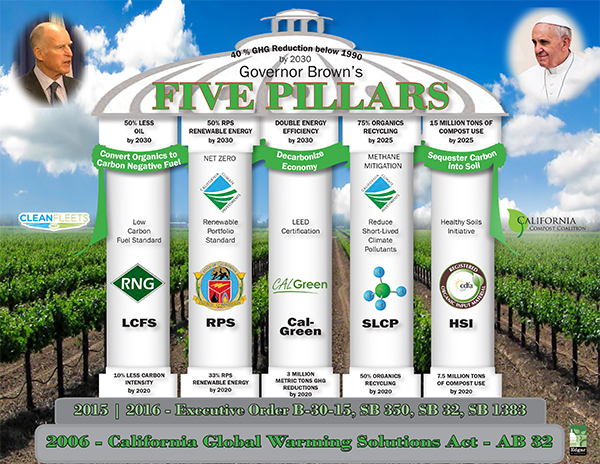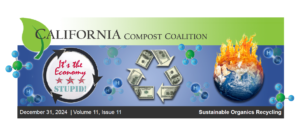California is on track to meet or exceed the current target of reducing greenhouse gas emissions to 1990 levels by 2020, as established in the California Global Warming Solutions Act of 2006 (AB 32), as well as reaching the 33% renewable portfolio standard (RPS) by 2020. Overall trends in the inventory also demonstrate that the carbon intensity of California’s economy, the amount of carbon pollution per million dollars of GDP, is declining.

Carbon intensity has dropped 23 percent from the peak in 2001, and declined an average of 1.9 percent per year over the past four years as GDP grew 6.6 percent overall during the same period as reported by the California Air Resource Board. This demonstrates a decoupling of economic growth and carbon pollution.
With AB 32 as a strong foundation, Governor Brown unveiled his Five Pillars vision in his inaugural address earlier this year that by 2030, California will increase from one-third to 50 percent our electricity derived from renewable sources; reduce today’s petroleum use in cars and trucks by up to 50 percent; double the efficiency savings from existing buildings and make heating fuels cleaner; reduce the release of methane, black carbon and other potent pollutants across industries; and manage farm and rangelands, forests and wetlands so they can store carbon. Governor’s Office is now hosting a series of Pillar Symposiums – 2030 Climate Change Commitments – on each of these topics. The Legislature has endorsed the first three pillars with SB 350 (DeLeon). The Pope has blessed this vision with the release of the encyclical — titled “Laudato Si,” or “Praised Be” being hailed as one of the most important statements on climate change ever produced by the Catholic Church.
Governor Brown also issued an executive order to establish a California greenhouse gas reduction target of 40 percent below 1990 levels by 2030 – the most aggressive benchmark enacted by any government in North America to reduce carbon emissions over the next decade and a half. California’s new emission reduction target of 40 percent below 1990 levels by 2030 will make it possible to reach the ultimate goal of reducing emissions 80 percent under 1990 levels by 2050. “With this order, California sets a very high bar for itself and other states and nations, but it’s one that must be reached – for this generation and generations to come,” said Governor Brown. The Governor’s executive order aligns California’s greenhouse gas reduction targets with those of leading international governments ahead of the United Nations Climate Change Conference in Paris later this year. SB 32 (Pavely) plans to place this executive order into law this year.
Building upon AB 32, the Five Pillars are the structural elements to achieve the SB 32 goals. Organic waste conversion is the mortar that binds these pillars together. Eliminating organics from the landfills will mitigate methane generation as a short-lived climate pollutant (Pillar 4) and instead create biomethane at anaerobic digestion facilities to generate more renewable energy (Pillar 2) and carbon negative fuel (Pillar 1) to displace diesel. The digestate can be composted to be sequester to store carbon and promote healthy soils (Pillar 5). The multi-billion Greenhouse Gas Reduction Fund from cap-and-trade auction revenues has been re-branded as California Climate Investment to assist in funding this economic transition where the economy grows and carbon intensity decreases.






